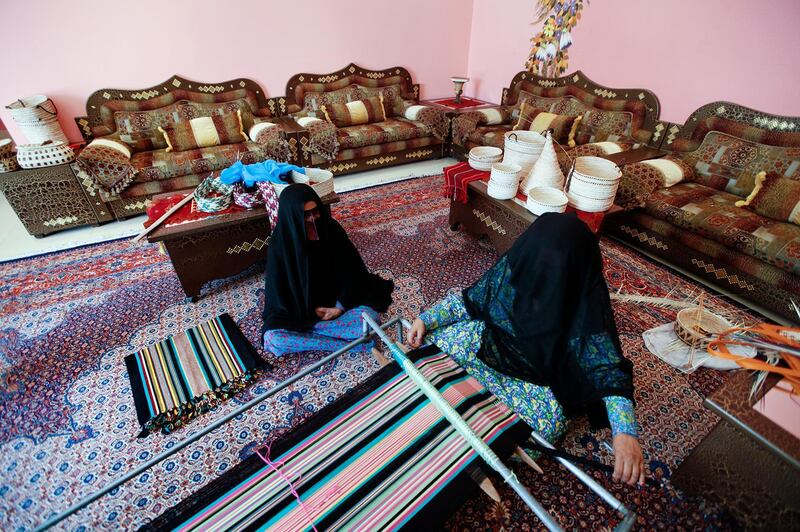Dressed in immaculately starched and pressed whites, the two ranks of men who faced each other at silly mid-off and silly mid-on added an unmistakably Emirati touch to the cricket pitch at my daughters' school this week.
Assembled as part of the school’s National Day celebrations, they had eschewed the sport’s usual uniform of pads, caps and jumpers in favour of national dress: ghafiya (cap); gutra (headscarf); agal (black cord); and kandura, that were accessorised not with willow cricket bats but with bamboo camel sticks.
They had gathered for Al Ayyala, the traditional victory or “stick dance” that is performed at special events, celebrations and weddings throughout the UAE and Oman, and which was inscribed on Unesco’s representative list of the intangible cultural heritage of humanity in 2014.
The performance was led by a tall, handsome middle-age man wearing mirrored aviator sunglasses, whose carefully-studied nonchalance with his camel stick couldn’t mask the obvious pride he was taking in his role.
An Arabian stallion and a prize camel were positioned at deep backward point and square fine leg for rides and photo opportunities, while beyond the boundary traditional black, goat-hair tents contained displays of falconry, khoos (palm frond) weaving and henna painting.
In another, an elderly fisherman opened oysters in search of pearls while one of his fellows wove traditional fish traps (garaagir) from palm fronds and a third repaired nets. But it was the display of traditional al sadu weaving, positioned at straight long on, that captivated my daughters most.
Without a second thought they greeted the niqab-clad woman who was operating the large metal loom and then sat inside it, on either side of her, as she showed them how to operate its warp and its weft. Within moments they were fully engaged and the woman looked at me with surprise in her kohl-lined eyes, which twinkled as she gave me a thumbs-up.
Despite having plenty of opportunities to play with friends, hold falcons or to feast on Emirati cuisine, my children returned, time and again, adding a few millimetres to the red and black ribbon that was steadily making its way from the back to the front of her loom.
The sight of two blonde and very English children sat happily in the company of a group of fully covered Emirati women, in a Bedouin tent, on the edge of a cricket pitch made me think, not just of the UAE but of Britain, and sadly of how surprising such a scene would appear there.
“What do they know of cricket who only cricket know?” the Afro-Trinidadian historian and journalist CLR James once wrote, echoing Rudyard Kipling’s lament about the ignorance and insularity that traditionally define British life. Here, instead, on a day dedicated to national pride was a display of kindness and an acceptance of others. What better way could there be to celebrate National Day?
_________________
Read more of Nick's columns:
[ Abu Dhabi hidden gem Bayt Al Jenaibi should be preserved ]
[ Welcome to the neighbourhood – a catalyst for Abu Dhabi’s urban renaissance ]
[ Examining the past should be an uncomfortable experience ]
[ Abu Dhabi’s 8th Street is a perfect example of informal urbanism ]
_________________





